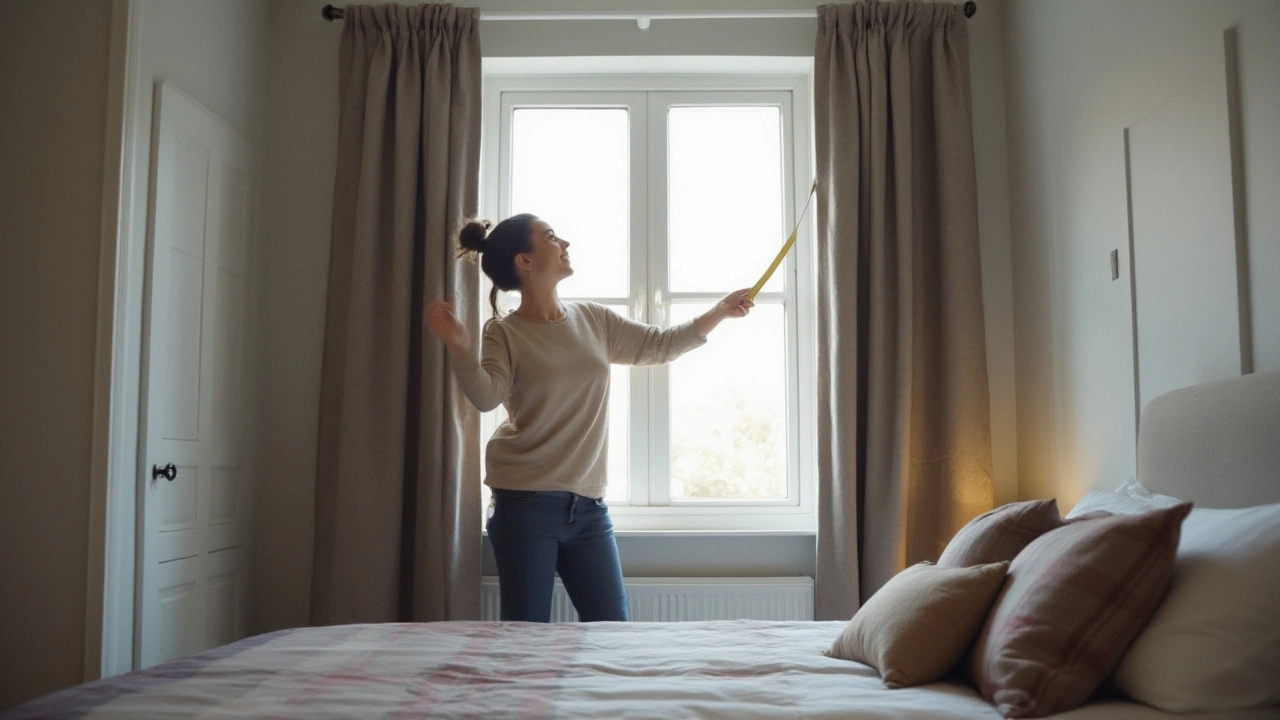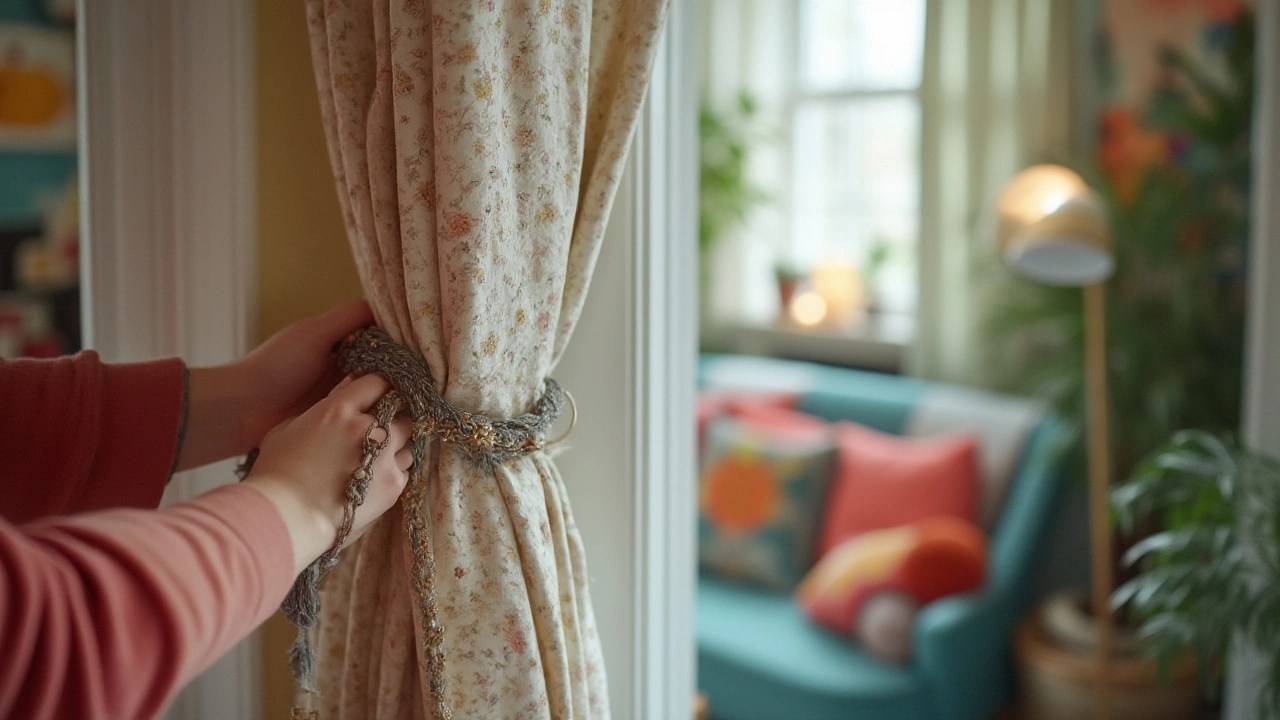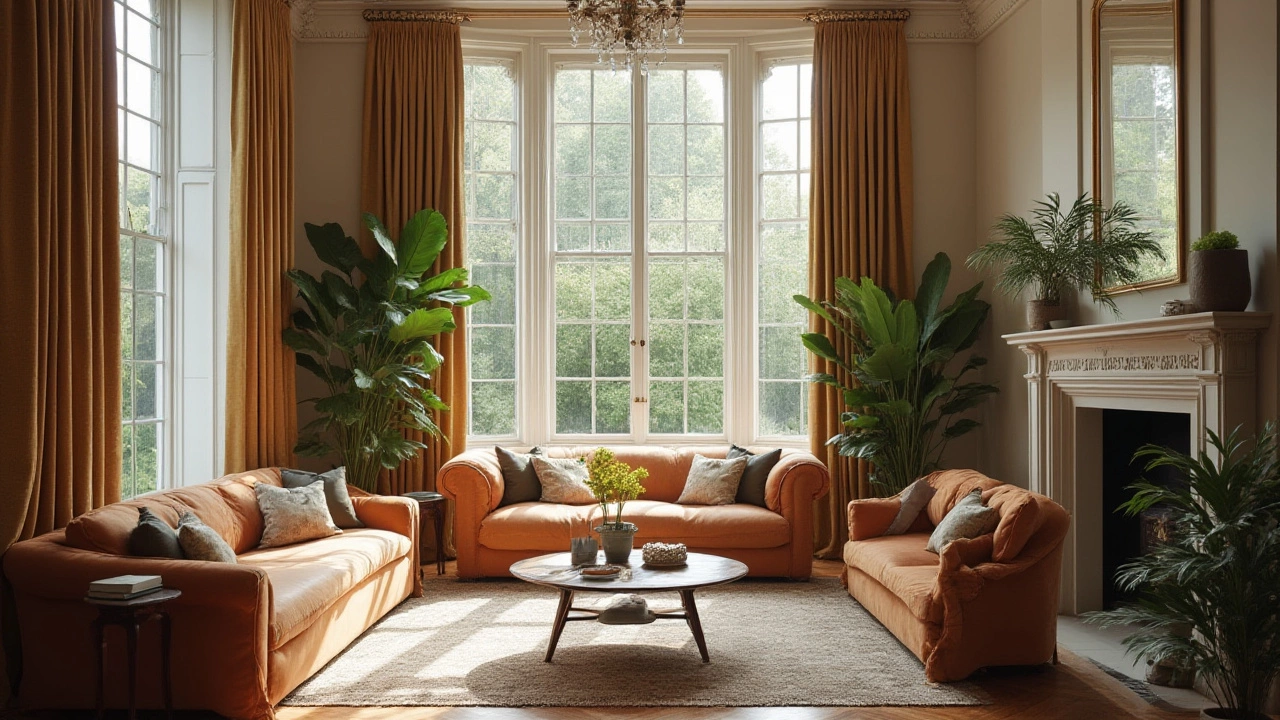If you ever walked into a room and instantly felt wowed but couldn’t put your finger on why, the secret might have been as simple as the curtain height. It’s a small detail, but it makes a world of difference. Hang your curtains too low, and windows look squatty. Mount them high and wide, and suddenly the room breathes—taller ceilings, more light, and that magazine-ready polish. Here’s the fun twist: nearly everyone gets this wrong on their first try. That’s right. When Maxwell and I moved into our first apartment, we were blissfully unaware and hung every curtain rod a literal inch above the window. We didn’t know any better, but looking back now, our living room windows looked like they were wearing awkward capris instead of elegant ballgowns.
Why Curtain Height Matters
Your house might have gorgeous crown molding, beautiful natural light, or even those sought-after floor-to-ceiling windows. But if your curtain rods are set at the wrong height, even the prettiest details disappear into the background. Tall curtains aren’t just a visual trick—they change the whole energy of a space. A higher placement instantly draws the eye up, making ceilings appear loftier. Not to mention, properly hung curtains frame the window like a work of art, creating a finished look. I’ve even seen the sleepiest guest bedrooms perk up just by raising the curtain rod another foot toward the ceiling. Neat, right?
There’s also a practical reason beyond good looks. Hanging curtains higher helps keep light out more effectively (think sleepy Sunday mornings with Silas and Clementine requesting pancakes at 7 am, blackout curtains are a necessity). It can provide better insulation too—a bonus on both scorching summer days and chilly winter nights. And if you have a cat like Whiskers, the higher you hang those curtains, the less tempting they are as a makeshift climbing gym.
When you look at magazine spreads or HGTV reveals, you’ll notice a recurring pattern: curtain rods are hardly ever at window frame level. Interior designers almost always set them several inches above, close to the ceiling or crown molding. This universal rule has stuck around because it just…works.
The Golden Rules for Curtain Height
There’s a basic formula for figuring out how high to hang your curtains, but don’t worry—it’s less math class, more common sense. The sweet spot is usually about 4 to 6 inches above the window frame, or even closer to the ceiling if you’re aiming for the look of taller walls. If your ceilings are 8 feet or higher, most designers recommend hanging the rod 8–12 inches above the frame or right below the crown molding. Got extra-tall ceilings? Don’t be shy—go as high as you reasonably can.
Otherwise, here’s how to break it down:
- Standard ceilings (8 feet): Rod goes 4–6 inches above the window, or as high as possible if space allows.
- Tall ceilings (9 feet+): Rod can go 8–12 inches above or all the way up to the molding/ceiling.
- If your windows are super close to the ceiling (2 inches or less), just hang the rod as high as it’ll go without bumping against the ceiling.
- For arched or accent windows, let the window guide you, but don’t be afraid of drama.
What about curtain length? Here’s where people often make the mistake of buying curtains that just touch the bottom of the window trim. That shrinks the whole room visually. The best look is for curtains to either graze the floor, kiss it, or barely puddle an inch or two. Think floor-skimming, not mid-calf. Pro tip: Always measure from your planned rod height to the floor, never the window’s top, to make sure you get the right length.

Window Types, Odd Layouts, and Common Mistakes
Not all windows are textbook rectangles with plenty of space above the trim. Sometimes you’ve got short windows, windows high on the wall, or even those ancient radiators in the way. Awkward, yes, but nothing unsolvable. If your windows feel out of proportion, don’t be afraid to fake it. Hang your curtains well above the trim to create the illusion of larger, more elegant windows.
If you have odd layouts—like corner windows or windows with very little wall on the sides—consider using ceiling-mounted curtain tracks. They let the fabric hang clean and tall, even where standard rods won’t work. I love this trick for tight bedrooms or awkward rentals. For bay windows, extend the rod to reach beyond the edges, so the fabric clears the glass when open. Facing tricky obstacles like baseboard heaters? Opt for curtains that “kiss” the floor or hover a half inch above so they don't drag or get caught.
Mistakes? The most common one is going too short with your curtain length or too low with your rod. Both can stunt the look of the window, making the whole room feel unfinished. I once visited a friend’s house (she’ll remain nameless), and her beautiful velvet panels hovered like five inches above the floor. It was the only thing I could see—like capri pants on a tall friend, you just want to gently urge them to pull them down. Another blunder is skimping on the width; always go wider than the window frame so curtains can stack off the glass, letting in more light and making the window feel grander.
Here’s a quick rescue if your ready-made curtains are too short: Add an extra band of fabric or a contrasting hem at the bottom. Custom look, minimal effort. Or, flip the curtain upside down (works with grommet styles) to squeeze out an extra inch or two.
Choosing the Right Curtain Style and Rod for Your Look
The style of curtain and curtain rod you choose makes all the difference in the way this height trick pays off. Grommet, rod pocket, pinch pleat, or tab-top—each creates its own silhouette. Grommet and pinch pleat styles tend to hang the straightest, creating long, uninterrupted lines from ceiling to floor. Rod pocket curtains look a bit softer and are perfect for casual or vintage spaces but watch out—they hang slightly lower than the actual rod, which can throw your measurements off. Add about 1–2 inches to your height calc to compensate.
Color and fabric matter too. Light colors and airy fabrics (think linen or sheer) exaggerate the illusion of space and height. Heavy or patterned curtains draw attention, which works if you want a bold statement—like dramatic velvet in the dining room or a moody blackout in a teen’s space. In Silas’s room, our white-out curtains in deep navy do double duty: they block light for sleep, but still look pulled-together and sharp because they’re hung well above the frame, right at the ceiling.
When it comes to rods, don’t default to a flimsy tension rod. Rods should extend 6–12 inches beyond each side of your window (unless the wall’s in the way), so the stacked curtains don’t cover the glass when open. This is a well-loved secret of interior stylists: wide rods and taller curtains make windows look bigger even if they aren’t. Finials—the decorative ends of rods—can add personality too. I’ve swapped plain ones for crystal knobs or iron scrolls when I want to kick the vibe up a notch in the living room.
If you’re the DIY type, it’s worth looking for extendable rods and brackets if your project includes wide or paired windows. And always double and triple check before drilling; I may or may not have a hidden patch behind Clementine’s curtains as a gentle reminder.

Tips, Tricks, and Myths About Hanging Curtains
Some people insist curtains have to puddle dramatically; others say never let them touch the floor. Neither “rule” fits every space. If you have pets like Whiskers or super active kids, aim for a just-barely-kissing-the-floor look. It keeps clean-up easy and fabric safe from muddy paws or crayon masterpieces.
There’s also a myth that short windows should get short curtains, but the opposite is true: floor-length curtains trick the eye into thinking awkward windows are full height. Fast fact: a study by the Window Coverings Manufacturers Association in 2022 found that living rooms with curtain rods mounted 8 inches above the frame rated 20% higher in perceived luxury than those at window height.
Always use a fabric tape to measure from your planned rod location to the floor, and double-check with a level before you start drilling. (Don’t eyeball it unless you’re crafting a funhouse!) Steam your curtains after you hang them so those packed creases drop out, and let gravity do its work—those first few days transform a wrinkly panel into a showstopper.
If you’re worried about commitment, use removable adhesive brackets or command hooks for lightweight curtains in rentals. Trust me, your landlord won’t even notice. And don’t be afraid of mixing patterns and colors, especially if your walls or furniture are neutral. Play around with samples. Sometimes, Silas wants neon green, Clementine wants pink polka dots, and, well, compromise ends with a fabric both love because it’s hung like a pro, so the patterns don’t feel overwhelming.
Lighting changes everything. If you want softer daylight, try light-filtering curtains; for ultimate privacy or to block out the world during marathon movie nights, go with blackout panels.
And finally, the most important tip: trust your eye. Every space is a bit different. Start high, check the look, and don’t be afraid to adjust. Your walls and windows—and the people and pets who share your space—will thank you for it. The transformation from ‘meh’ to ‘marvelous’ is in the details. Happy curtain hanging!


